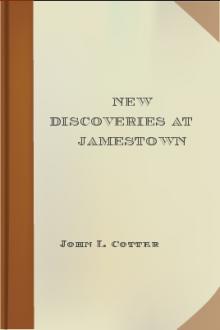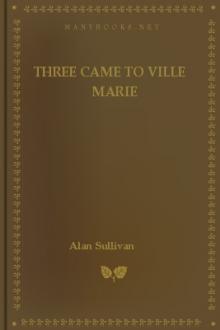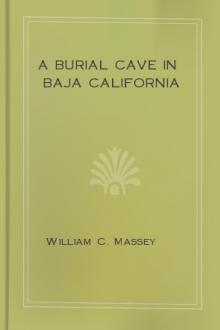Mine Pumping in Agricola’s Time and Later

[1] W. B. Parsons, Engineers and engineering in the Renaissance , Baltimore, 1939. Abraham Wolf, A history of science, technology, and philosophy in the 16th and 17th centuries , New York, 1935; and A history of science, technology and philosophy in the eighteenth century , London, 1938. C. M. Bromehead, “Mining and quarrying to the seventeenth century,” in Charles Singer and others, A history of technology , vol. 2, Oxford, 1956.
[2] According to Parsons ( op. cit. , footnote 1, p. 629) the introduction of machinery worked by animals and falling water, “radical improvements” of the 15th century, fixed the development of the art “until the eighteenth, and, in some respects, even well into the nineteenth century.” Wolf in his History of science … in the eighteenth century (p. 629, see footnote 1) agrees, saying that “apart from [the steam engine] mining methods remained [during the 18th century] essentially similar to those described in Agricola’
Seaport in Virginia

749 the bill came back from the Council (the upper house) with additional amendments to which the Council desired the house’s concurrence. Washington was again sent up to the Council with the approved amendments, and on Thursday, May 11, 1749, Governor Gooch commanded the immediate attendance of the house in the Council chamber. The Speaker, with the house, went up accordingly; and the Governor was pleased to give his assent to the bill “for erecting a town at Hunting Creek Ware House, in the County of Fairfax.”[9]
The act stated that such a town “would be commodious for trade and navigation, and tend greatly to the best advantage of frontier inhabitants.”[10] Within four months after passage of the act, sixty acres of land belonging to Philip Alexander, John Alexander, and Hugh West, “situate, lying and being on the South side of Potomac River, about the mouth of Great Hunting Creek, and in the County of Fairfax, shall be surveyed and laid out by the surveyor of the said County … and vested in the R
Les technologies et le livre pour tous

formation interchange) original sur sept bits, avec des règles précises pour le formatage. Grâce à quoi les textes peuvent être lus sans problème quels que soient la machine, la plateforme et le logiciel utilisés, y compris sur un PDA ou sur une tablette de lecture. Libre ensuite à chacun de convertir les livres dans d’autres formats, après avoir vérifié que les oeuvres sont également du domaine public dans le pays concerné.
En janvier 2004, le Projet Gutenberg essaime outre-Atlantique avec la création du Projet Gutenberg Europe. A la mission originelle s’ajoute le rôle de passerelle entre les langues et les cultures, avec de nombreuses sections nationales et linguistiques. Tout en conservant la même ligne de conduite, à savoir la lecture pour tous à moindres frais, par le biais du texte électronique gratuit, indéfiniment utilisable et reproductible. Et, dans un deuxi&
Conestoga Wagons in Braddock’s Campaign, 1755

ound ourselves every day less able to undertake the extra-ordinary march we were to perform.
Braddock soon appointed a Wagon Master General, and under him wagon masters, horse masters, and drovers. By his order, horses were to be mustered both morning and evening. When the men made camp, the wagons were to be drawn up in a single line along the road, with an interval between companies. The horses were then turned into the woods to feed, surrounded by a line of sentinels who were not to permit any horses to pass them.
By June 16, when the first brigade reached Little Meadows, Braddock realized that the advance of his column was being retarded and his troops weakened by the number of wagons in his train.[36] Washington, who had profited from his 1754 experiences in Pennsylvania, previously had recommended that Braddock use more pack horses and fewer wagons.[37] It became obvious that wagons, while ordinarily superior to pack animals, lost this advantage if the roads were not sufficiently opened to
New Discoveries at Jamestown

pparently they did not become popular at Jamestown. But the brick
foundation of one true multiple-family unit has been uncovered, and two
others approach this category, thus providing the true precedent for the
row houses which came to characterize miles of Baltimore and
Philadelphia streets, and are a familiar pattern of some modern duplex
apartment units.
This Jamestown row house is probably the most impressive foundation on
the island. It is 16 feet long and 20 feet wide (inside measurement),
situated east of the Tercentenary Monument, facing south, well back from
the river and “the back streete.” A cellar and a great fireplace
terminate the east end, and 9 other fireplaces are evident in 4 main
divisions, which may have housed one family or more in each division.
Since artifact evidence relates it to the last quarter of the 17th
century, and possibly the beginning of the 18th, there would seem little
possibility of the row house having served as a public building or a
tavern. There is some evidence tha
Three Came to Ville Marie

st a joyous lover.”
“You must see her and judge for yourself: she is twenty; her father served under Turenne in Holland; she is gay, like you, and….” he paused with a sudden softening of expression that gave his sternly moulded features a sort of pathos, “Jules, will you tell me something, and not laugh at me?”
“Certainly, if I can.”
“You are perhaps in love yourself?”
“At the moment, no: I am what you call convalescent from the last attack, split between regret and anticipation. Today I am actually interested in the billeting of troops.”
“Well, I am deeply in love, yet make little progress. Jacqueline’s mother is on my side, but I am not sure of her father. My resources are sufficient, indeed for a Breton I am a rich man, and Jacqueline’s dot is provided. For me there can be no other woman, but, but….”
“You feel at a loss when with her, eh?”
Paul blinked at him. “How did you know that?”
“It is very simple; you lack practice.”
“But my heart sp
A Burial Cave in Baja California

/p>
In mission times tubular stone pipes were used throughout northern and central Baja California by shamans; they were smoked and the smoke was blown on injured or diseased parts, or they were used as sucking and blowing tubes for the removal of disease-causing objects.
Miscellaneous stone artifacts. –There are few stone artifacts besides the pipes. Among these is a worked piece of pumice (139613), 8 cm. by 4 cm., which has a bowl-like concavity ground through from one side to the other (pl. 12, c ). There are two fragments of gypsum which have been roughly chipped along one or more edges (139568, pl. 13, f ; 139569).
BONE
Bone awls or “daggers.” –Two bone awls or “daggers” of identical type are included in the collection (139589, a and b; pl. 12, a , b ). Both specimens are made of the sawed and ground metapodials of some large mammal, presumably deer. The shorter of the two (139589a) retains vestiges of a black adhesive for half the
The Unwritten Literature of the Hopi

n neglected their religious dances and ceremonies,
and of their ultimate salvation when they returned to their faithful
performance.
The Hopi objected to the slavish labor of bringing timbers by hand from
the distant mountains for the building of missions and, according to
Hopi tradition, to the priests taking some of their daughters as
concubines, but the breaking point was the demand of the friars that all
their old religious ceremonies be stopped; this they dared not do.
So the “long gowns” were thrown over the cliff, and that was that.
Certain dissentions and troubles had come upon them, and some crop
failures, so they attributed their misfortunes to the anger of the old
gods and decided to stamp out this new and dangerous religion. It had
taken a strong hold on one of their villages, Awatobi, even to the
extent of replacing some of the old ceremonies with the new singing and
chanting and praying. And so Awatobi was destroyed by representatives
from all the other villages. Entering the sleeping vill
Our Legal Heritage, 4th ed.

; with a slave of the second [class], 50 scaetts [a denomination less than a shilling]; with one of the third, 30 scaetts.
17. If any one be the first to invade a man’s tun [premises], let him make bot with 6 shillings; let him who follows, with 3 shillings; after, each, a shilling.
18. If a man furnish weapons to another where there is a quarrel, though no injury results, let him make bot with 6 shillings.
19. If a weg-reaf [highway robbery] be done [with weapons furnished by another], let him [the man who provided the weapons] make bot with 6 shillings.
20. If the man be slain, let him [the man who provided the weapons] make bot with 20 shillings.
21. If a [free] man slay another, let him make bot with a half leod-geld of 100 shillings.
22. If a man slay another, at the open grave let him pay 20 shillings, and pay the whole leod within 40 days.
23. If the slayer departs from the land, let his kindred pay a half leod.
24. If any one bind a freeman, let
Our Legal Heritage, 5th Ed.

f their banks to protect the enclosed farmsteads and villages from stock wandering off or being taken by rustlers, and from attacks by wild animals or other people. Later a rampart was added from which sentries could patrol. These were supported by timber and/or stone structures. Timbers were probably transported by carts or dragged by oxen. At the entrances were several openings only one of which really allowed entry. The others went between banks into dead ends and served as traps in which to kill the enemy from above. Gates were of wood, some hung from hinges on posts which could be locked. Later guard chambers were added, some with space for hearths and beds. Sometimes further concentric circles of banks and ditches, and perhaps a second rampart, were added around these forts. They could reach to 14 acres. The ramparts are sufficiently widely spaced to make sling-shotting out from them highly effective, but to minimize the dangers from sling-shotting from without. The additional banks and ditches could be

